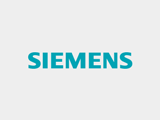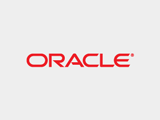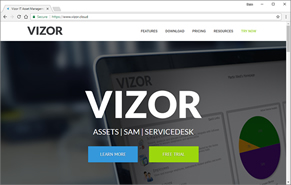You are here :
- Home
- Business Issue Management
- Vector Issue Tracker
Key Capabilities and Features
Vector Issue Tracker is a generic, fully featured, Web-based issue tracking and business process management engine, designed from the outset to be highly configurable to a wide range of application requirements. The global customer base of Vector Issue Tracker has three main groups -
- global, horizontal IT market applications such as IT User Support, Software and Configuration Change Management, Asset and Data Loss Incident Management,
- global, horizontal market requirements such as Customer Issue Tracking,
- and vertical market and customer-specific requirements such as Dynamic Inventory Tracking, and managing compliance with the UK Financial Services Authority’s regulations on interactions with customers.
These notes outline the main architectural features of Vector Issue Tracker that are available to all users. If you are specifically interested in HelpDesk, please also see the notes for the HelpDesk Template.
New Functionality in v6.0
Version 6 of Vector's Issue Tracker platform introduced significant extensions to Workflow Management, User and Contact Management, UI, Security, Integration and Security. View on line or download the PDF in either 8.5"x11" (Americas) format or A4 format (EMEA)..
Issue Tracker Projects
A user can work in any number of issue tracker Projects, with access controlled through the logon dialog. For example, all employees could have access to an organization suggestion box scheme, while staff in Customer Relations could also have access to a Customer Complaint processing application.
Service Level Agreement (SLA), Workflow and Escalation
Service Level Management aligns business needs with the delivery of services, and is a major factor now in the management and measurement of IT support performance.
Issue Tracker provides the ability to define, document, manage and monitor Service Level Agreements. Service Level Management involves defining a catalogue of the different services provided to the organization’s customers or to internal users (e.g. E-mail). An SLA defines the Service Level that a specific Service Type must have. Issue Tracker provides the ability to define and manage Service Levels, like Gold, Silver and Bronze. Automatic reminders and reports provide the framework to review and report performance of the service for each agreement. *expandable screenshot*
In order to avoid failures in the levels of performance of the service, a Service Level must be monitored. This is done through the Escalation Rules. Each Service Level has Escalation Rules that will ensure the Service Level goals are met on time, automatically assigning and re-assigning the issues and sending appropriate e-mail notifications. Business Hours can be defined differently per Service Level. For example, Gold Level could offer 24x7 while Bronze Level only 9-5 weekdays.
E-Mail Integration
With ever more demanding Service Level Agreements increasing the pressure on resolution times, it is critical that incoming issues are routed swiftly and if possible automatically to the most appropriately skilled support analyst. Issue Tracker accomplishes this with a powerful Mailbox Workflow rules engine to analyze incoming issue emails. Depending on the interpretation of the email content, the rules system invokes defined actions such as optimal routing for the issue, or can initiate another process.
In Vector’s experience, many dispersed organizations use multiple mail servers. In response, Issue Tracker provides Multi-server E-mail configuration that enables the Mailbox Workflow engine to monitor email from multiple accounts and multiple e-mail servers. This capability is of course Web based so configuration details can be changed at any time, from anywhere.
More information is available on HelpDesk and IssueTracker email integration
Self-Service Mode
IT User and Customer Support operations gain a further boost in efficiency from the on–line Self–service Issue View, which end users can use to both post issues to the help desk and review the status of their issues at any time without using analyst time. This view can also be used by the end user to add further information for the analyst – reflecting the reality that frequently the end user realizes there is more information for the analyst, at some time after posting the issue.
As an alternative to connecting to a Web site, users can request an Emailed Status Report at any time, simply by clicking a ‘mailto’ link that is sent out with the initial response to the receipt of the issue. Self service has to be simple and practical!
Great Plains / Microsoft Dynamics Integration
Issue Tracker integrates with Great Plains through two methods – import of Great Plains Customer and Contact information, which can be scheduled for regular refresh, and real-time access to Great Plains database items from within a tracked issue. This functionality, which opens the way to exciting cross-department business process automation, can be provided for any business system with a SQL-accessible database.
VoIP Integration with SIP Protocol
Issue Tracker integrates with VoIP systems through the SIP protocol. Great value can be generated in having instant access to caller-related information presented to the analyst taking the customer call. This information is extracted from data held in the Issue Tracker database – including information imported from Great Plains as mentioned above. More information is available on the VoIP integration.
Team Working
Issue Tracker provides extended team functionality through the Work Team capability. Users can belong to a Work Team. Issues can be assigned to a Work Team, manually or through workflow rules. Users can then query for issues assigned to their specific Work Team and select a particular issue to work on (assign themselves an issue). More information is available on Team Working
Parent and Child Issues
Several submitted issues can refer to the same problem. In order to track these issues in a centralized and efficient way, it must be possible to associate related issues to a master or parent issue. The issues that are associated to a master or parent issue are referred as child issues.
Reports: ITIL
Issue Tracker includes a large default set of Web–based reports. Emphasis is given to organizations’ needs to monitor issue resolution performance trends – an important aspect of ITIL best practice. Trends can be analyzed by time, by analyst, by topic, and from any other angles represented by data fields in the issue tracking schema implemented by the customer.
Available in these Solutions
Vector Issue Tracker is exploited in these IT Help Desk & Service Management Solutions
Vector Issue Tracker is exploited in these Business & Process Management Solutions













